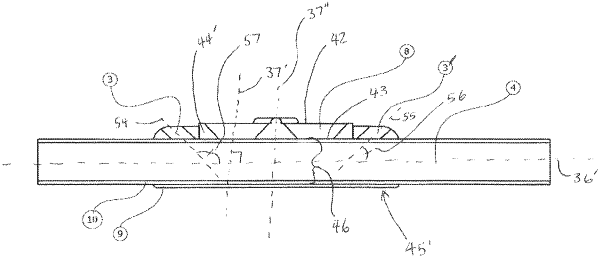| CPC A61M 39/0208 (2013.01) [A61L 31/04 (2013.01); A61L 31/046 (2013.01); A61L 31/146 (2013.01); A61M 1/14 (2013.01); A61M 39/02 (2013.01); A61M 39/06 (2013.01); A61M 2039/0205 (2013.01)] | 14 Claims |

|
1. A vascular access device comprising:
a top portion; and
a bottom portion,
wherein:
the top portion and the bottom portion are not monolithic with each other;
the top and bottom portions are configured to couple to one another around an entire 360° perimeter of a portion of a vessel when implanted to form a central chamber that houses the entire 360° perimeter of the portion of the vessel between a first surface of the top portion and a second surface of the bottom portion;
the top portion includes an opening that allows a needle to pass through;
the central chamber includes a central longitudinal axis and the opening includes a central vertical axis that is orthogonal to the central longitudinal axis; and
the second surface of the bottom portion is a hardened, non-compliant surface that extends through the central vertical axis when the top and bottom portion are coupled to one another.
|